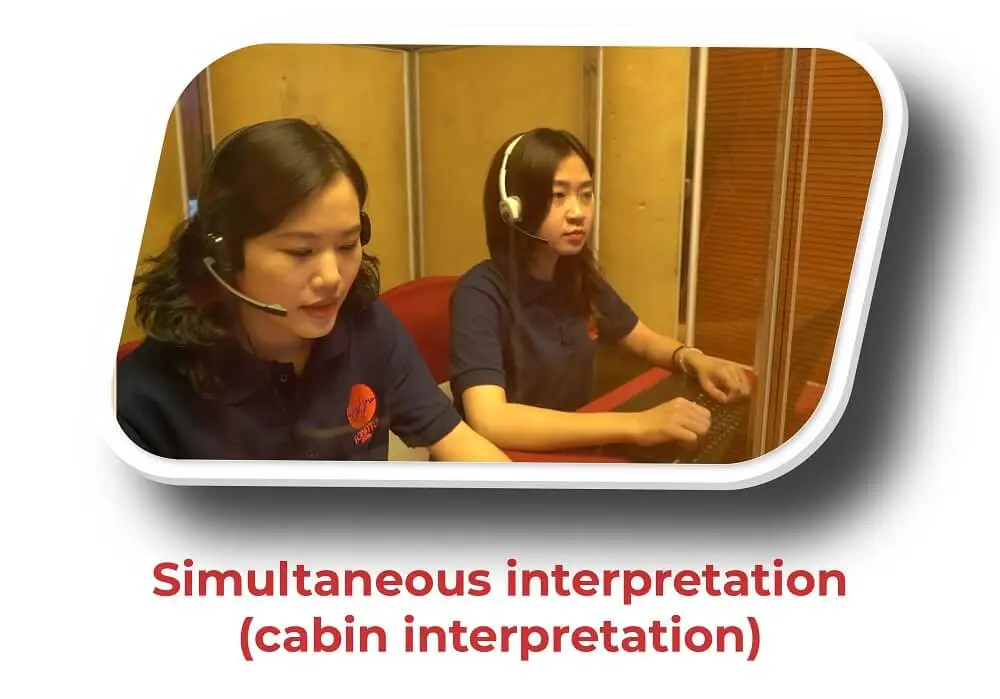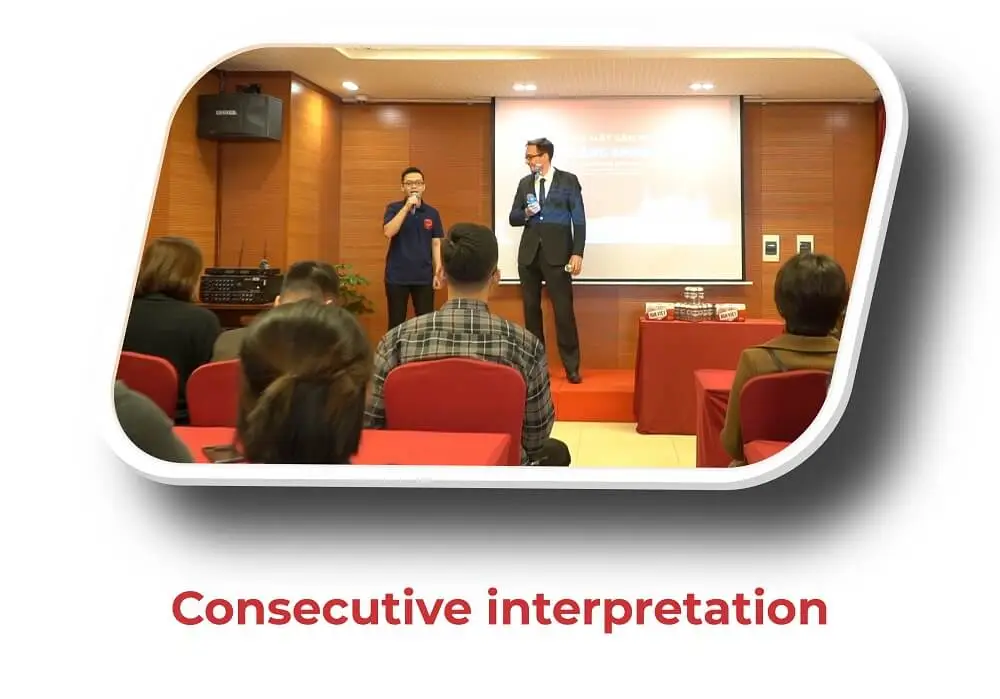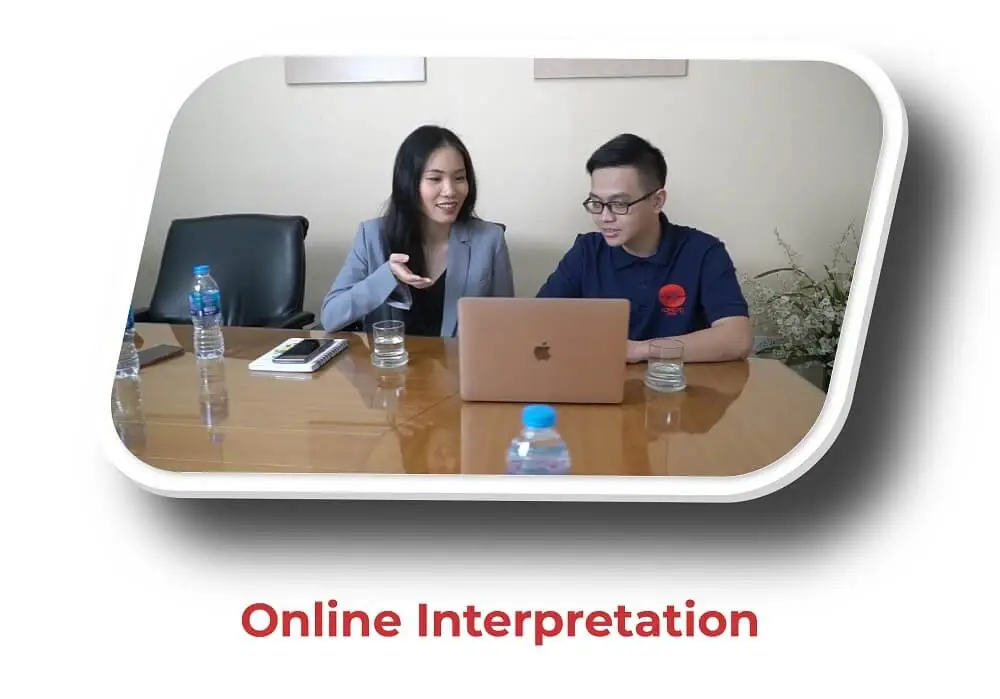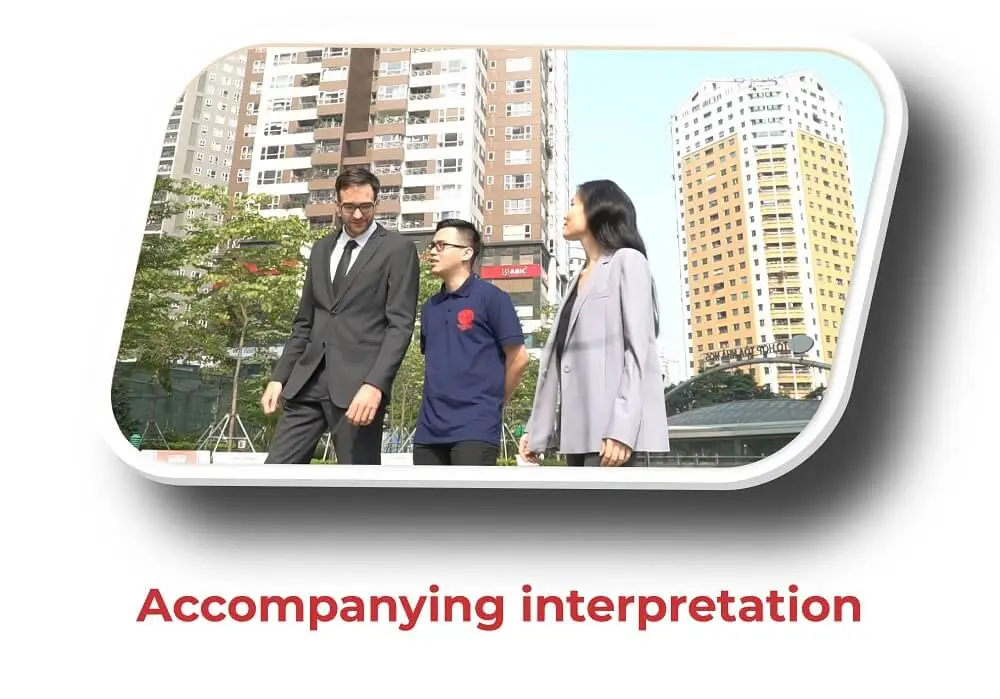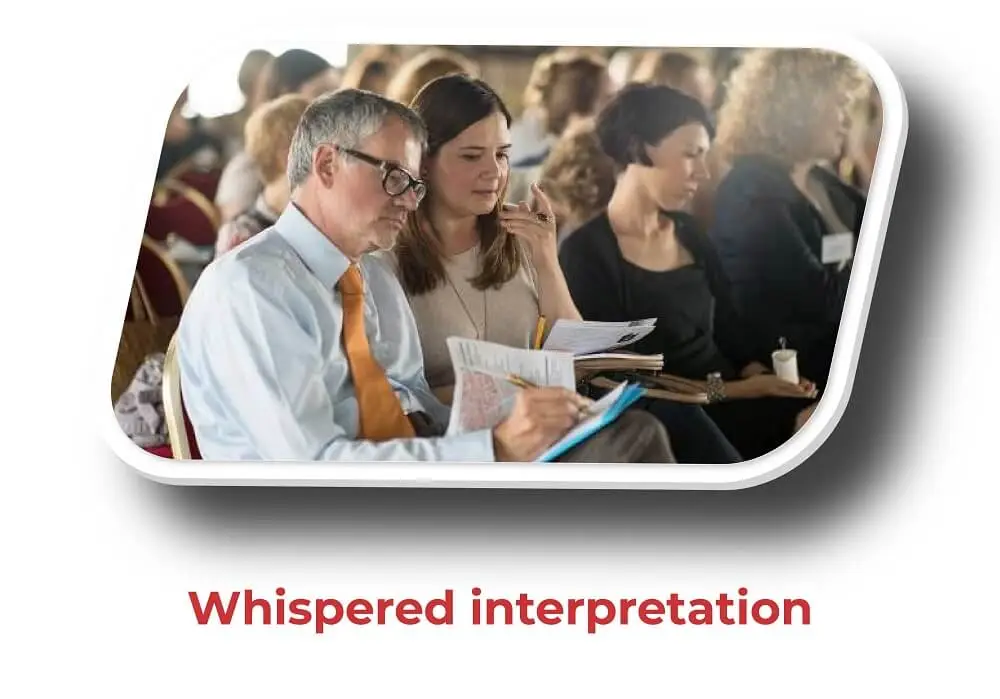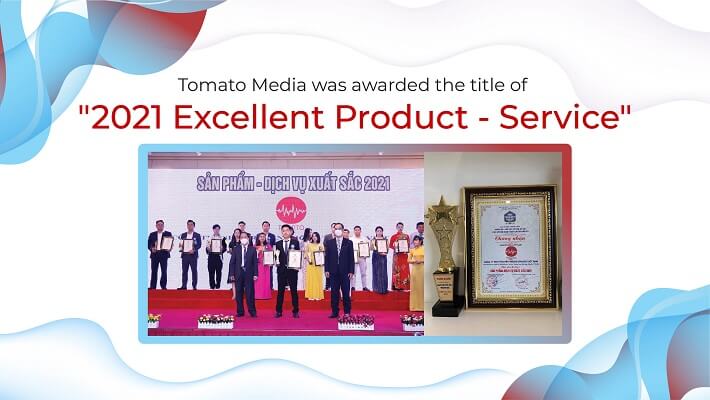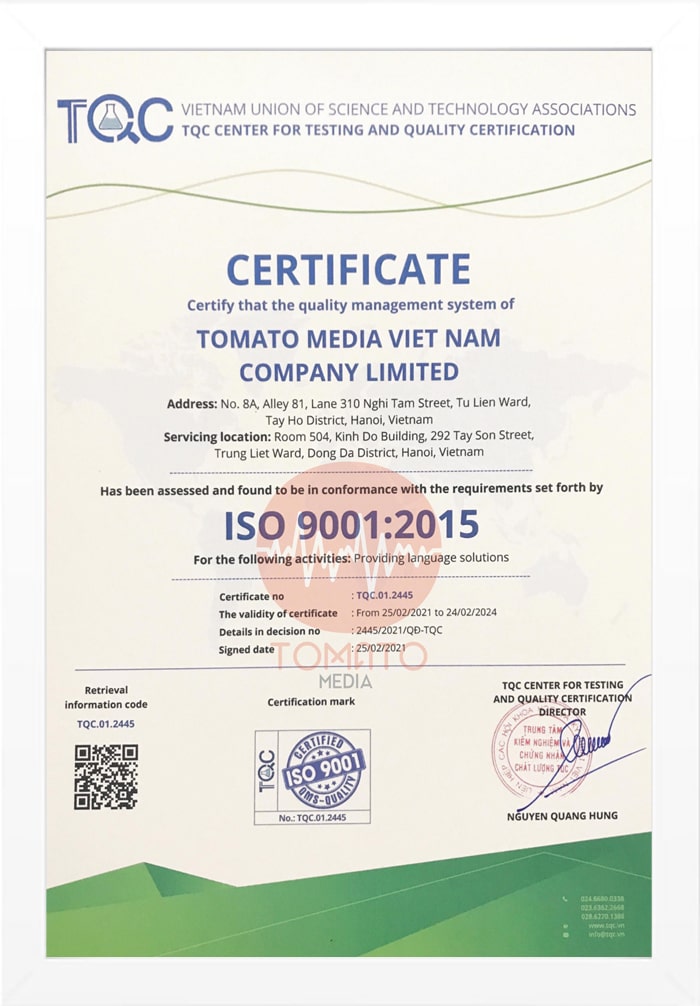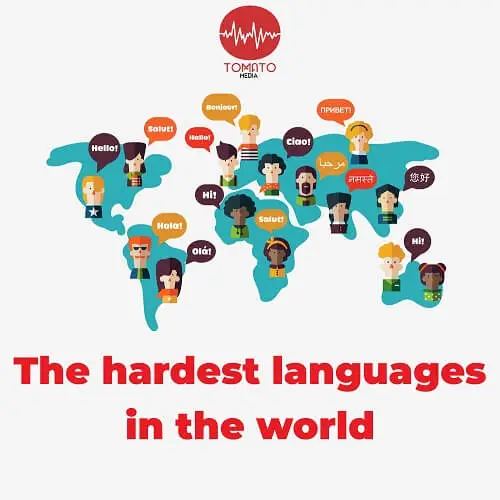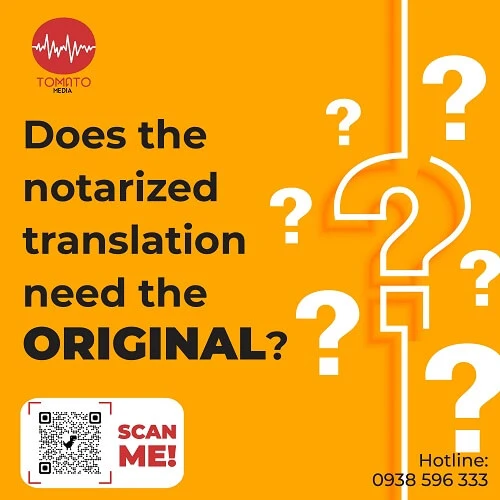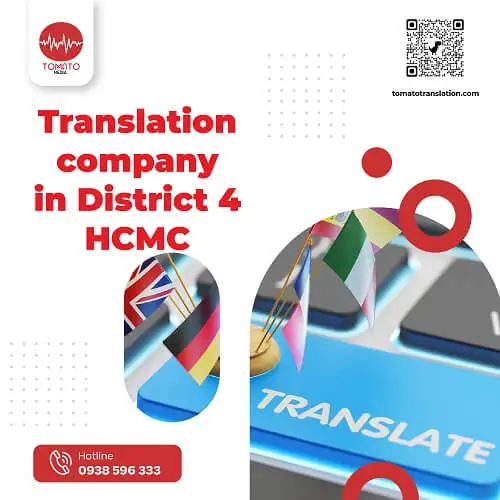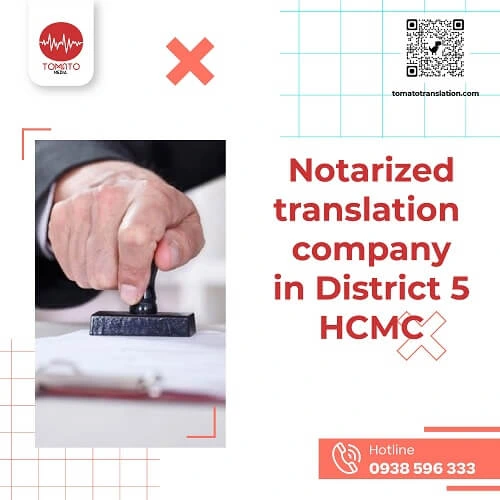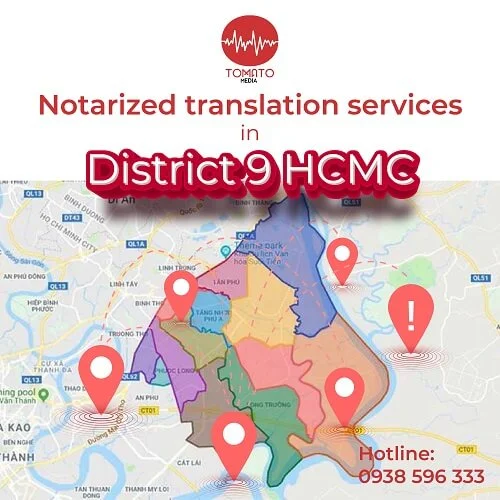In the world, there are many languages, each with its own characteristics in terms of vocabulary, grammar, pronunciation, and different usage. Are you ever curious about what the hardest languages in the world are? Let’s find out through this article with Tomato Media. How many languages are there in the world? What is the hardest [...]
Types of interpretation: how different are they? How to choose? Answer questions about consecutive and simultaneous interpretation
Interpretation is a verbal translation activity that helps parties remove language barriers for easy communication and cooperation. Interpretation has many different types, and depending on the needs and context, there is a way to choose the appropriate one.
Register to find an interpreter for your event

NỘI DUNG (CONTENT)
Common types of interpretation
Currently, there are 5 types of popular interpretation, including: simultaneous interpretation, consecutive interpretation, whispered interpretation, accompanying interpretation, and online interpretation. Each type has its own characteristics and requirements.
1. Simultaneous interpretation (cabin interpretation)
Among the types of interpretation, simultaneous interpretation is considered the most difficult translation skill for an interpreter. Simultaneous interpretation (cabin interpretation) is the activity of simultaneously translating the speaker’s speech. When the speaker starts speaking, the interpreter in the booth starts translating through the microphone for the listener to understand, and it took less than 1 second to complete the translation after the speaker finishes the sentence.
Simultaneous interpretation is an option that ensures privacy and saves time on translation. This type of interpretation is suitable for important interpretation sessions that need to happen quickly and continuously with a large number of participants, such as conferences, seminars, online conferences, live broadcasts, and general meetings of shareholders, meetings of the board of directors, court hearings, etc.
Simultaneous interpretation, which requires a swift translation speed, does not give the interpreter time to think, select, and arrange words. Therefore, under the pressure of time, simultaneous interpretation is known as the highest level of the interpreting profession and requires the interpreter to have professional qualifications. In particular, it is necessary to ensure the following qualities:
- Experienced in various simultaneous interpretation projects
- Agility and improvisation skills
- Large vocabulary to be able to react quickly to the messages conveyed by the speaker
- Proficient in at least two languages at an advanced level. In addition, the translator knows how to arrange words and phrases to suit the fastest speed because, when translating, there will be no time to think about or choose words.
- Be responsive, able to grasp the speaker’s psychology, and capable of predicting the entire meaning of the sentence even though they have not finished the sentence.
See also:
Learn more about simultaneous interpreting for corporate and organizational customers
2. Consecutive interpretation
Consecutive interpretation is also one of the most popular types of interpretation today. Accordingly, after the speaker finishes a sentence or a short paragraph, the interpreter immediately translates it into another language so that the listener can grasp the content.
For interpretation sessions in small settings with a small audience, such as interviews, training sessions for human resources, presentations, press conferences, transactions, tours, etc., consecutive interpretation is used. The advantage of such a type of interpretation is that it can ensure high accuracy in the content to be conveyed, as the translator has time to analyze and consider the translation. However, the choice of consecutive interpretation may cost you more time. On average, the interpretation process can take up about 2/3 – 3/4 of the speaker’s speaking time.
Compared with simultaneous interpretation, simultaneous interpretation is considered to be less complicated. Nevertheless, interpreters of this type need to ensure such important skills as:
- Able to memorize information for a short time
- Capable of taking notes, organizing, arranging data, and collecting information for translation.
- Have a good preparation of vocabulary. For specialized interpretation, it is necessary to learn the topic and content as well as the terminology of the interpretation session.
3. Online Interpretation
This is a form that has become popular recently, especially during the ongoing COVID-19 pandemic. With this form, parties that do not have the opportunity to meet face-to-face can still communicate with each other through means such as Skype, Zoom, etc. This form is used in meetings such as negotiations, meetings, discussions, dispute resettlement, contract signing, etc.
Basically, this form of interpretation is not much different from traditional interpretation. However, this type of translation requires the interpreter to be proficient in the use of technological devices as well as have a stable Internet connection.
4. Accompanying interpretation
Accompanying interpretation is one of the types of interpretation registered by many customers in Tomato. Accompanying interpretation is an option to help solve difficult problems caused by language differences during business trips, sightseeing trips, or surveys with partners in different areas such as factories, workshops, events, notary offices, courts, etc. With this type of interpretation, the interpreter always accompanies his or her clients to assist them in conveying messages as well as receiving responses. Additionally, the interpreter can help customers with the cultural customs and way of life of the destination.
In order to be able to interpret well, interpreters are required to have highly specialized skills such as language proficiency, interpreting skills, the area of knowledge to be interpreted, and cultural, social, and economic understanding of the destination where the customer visits.
The characteristic of this type is long or far-away business trips. As a result, one of the requirements for interpreters when providing accompanying interpretation is the capacity to arrange frequent business trips.
5. Whispered interpretation
Whispered interpretation is a type of interpretation similar to simultaneous translation. However, the interpreter only translates for one person or a small group of about 1-3 people to listen at a low volume or whisper into the listener’s ear.
This type is suitable for internal meetings, conferences, negotiations, important visits, etc., with high requirements for privacy and information confidentiality. The drawback of whispered interpretation is that it can be distracting when numerous individuals are simultaneously providing interpretation in various languages. So, what are the requirements for a whispered interpreter?
- The ability to concentrate intensely, listen carefully without being distracted by surroundings
- Have the ability to clearly and gently pronounce words so that listeners can still easily grasp information even when speaking at a low volume.
- Proficient in at least two languages at an advanced level. Know how to arrange and select suitable words in a short time.
- Honesty, absolute confidentiality of customer information
What is the difference between the simultaneous interpretation and consecutive interpretation?
Among the types of interpretation, there are still many major differences between the simultaneous interpretation and consecutive interpretation, though they have the common point of acting as a communication bridge between the parties.
Simultaneous interpretation can save a great deal of time by helping listeners almost simultaneously grasp what the speaker is saying. However, many tools are needed to support this kind of interpretation, including microphones, booths for interpretation, headphones, etc. Additionally, simultaneous interpreters must be highly qualified and able to work under pressure, so the cost of hiring one will be higher. In order to prevent overwork and a drop in the quality of the interpretation, it might also be necessary to budget for the hiring of two interpreters who can alternate during a lengthy session.
Unlike simultaneous interpretation, consecutive interpretation gives interpreters more time to control and refine sentences before delivering the translation. However, this means that it will take more time for the listener to receive the information.
Maybe you’re interested in:
Learn more about: What is interpretation? Find out all the details about interpretation
How do you know which type of interpretation is suitable for your project?
Currently, there are many types of interpretation. To choose the right one, you should consider the following factors:
- Actual working conditions and working environment of the project to be interpreted
- The number of participants
- The time factor of the interpreting session (does the meeting have a strict requirement to save time?)
- Does the project need high levels of information confidentiality?
- Nature of the interpreting session (tours, seminars, exhibitions, fairs, trials, etc.)
Chose the right interpreter for the interpretation session
To ensure the best-quality interpretation, the selection of an interpreter is important. Interpreters need to meet the following criteria:
1. Language proficiency
Having good language skills and being fluent in at least two languages is a must for an interpreter. Besides, more and more countries are integrating together in many aspects, professions, and fields like economy, politics, culture, etc. Therefore, the correct and accurate expression of the message to the listeners is extremely important.
Besides, each country has its own style and expression, so interpreters need to master that. As a result, they are able to convey the message using a versatile vocabulary expression that corresponds to the target language listener rather than according to their emotions.
2. Agility
The interpreter must constantly practice and learn this skill in order to sharpen their minds and be able to listen to information, process it, and translate it quickly without losing the intended meaning.
3. Capability to proficiently use supporting tools and equipment
Interpreters, especially simultaneous interpreters, need to know how to proficiently use computers, microphones, and earphones as well as devices and applications to handle quickly in case of equipment risks, especially when performing online interpretation.
4. Ability to work under pressure
Interpretation is a job with many opportunities but also challenges because interpreters always have to be highly focused and their brains must work continuously to be able to translate correctly. Therefore, interpreters need to exercise their physical and mental health to be able to work with such intensity.
5. Responsive and able to grasp the speaker’s mind
To convey the right information, the interpreter needs to be able to predict the speaker’s message by observing their actions and mind. In addition, during the interpretation process, there are times when interpreters may encounter many sentences, grammar rules, and slang that they absolutely cannot find in any documents or books. Therefore, they need to learn through the process of interacting with native speakers.
6. Knowledge of technical terms
Interpreters not only need to be proficient in languages but also have knowledge of different professions and fields to be able to correctly use terminology.
7. Having a wide knowledge of cultures around the world
Each country has its own culture, and an understanding of such information is essential and important to make the translation accurate and accessible to the audience. In order to avoid cultural conflicts, interpreters need to constantly improve their cultural knowledge to choose sentences and grammar that are suitable for each country.
8. Professional working style
When you choose any type of interpretation, the professional demeanor of an interpreter is always an important factor contributing to the success of the event. The selected interpreter needs to show his or her professionalism through such expressions as punctuality, neat appearance, a sense of responsibility, honesty, the confidentiality of client information, etc.
9. Honesty and respect for the content to be translated
The interpreter must absolutely not bring his own feelings or comments into the translation, distorting opinions or conveying the wrong message. This is one of the taboos in the interpreting profession.
10. Interpreters have the ability to look up information
In addition to the requirements of language skills, interpreters also need to have knowledge of various fields, especially popular ones such as economics, technology, education, etc. Interpreters need to be willing to learn and capable of finding documents to improve their knowledge. Besides, the language can still innovate with new words appearing, so it is necessary to regularly study and update vocabulary so that interpreters can easily choose words suitable for the context.
Need to find a translator for your project? Contact Tomato!
Tomato Media is proud to have been the translation unit chosen by more than 5,000 partners during its five years of establishment and development with popular types of interpretation. We have a team of qualified interpreters with a bachelor’s degree in language studies, experience in many projects, and a professional working style. Tomato is dedicated to offering high-quality translations that are accurate to up to 99%, simple to read and understand, and close to the listener’s native culture. Besides, interpreters are always ready to go on business trips if required. In addition to the advantage of human resources, Tomato also satisfies the most demanding customers thanks to the following strengths:
- Tomato Media received the award “2021 Excellent Products and Services” and reached the top 126 of Slator 2023 LSPI
Tomato Media received the “2021 Excellent Products and Services” award
Tomato reached the top 126 of Slator 2023 LSPI
- The working process at Tomato Media achieved the international ISO 9001:2015 certificate
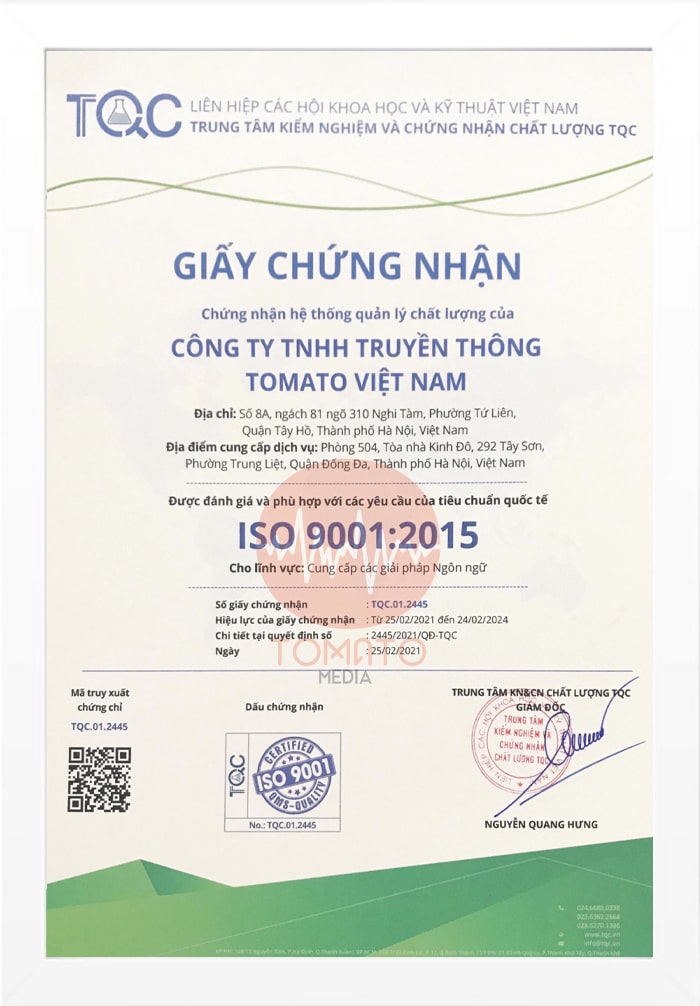
- Diverse interpretation services in more than 50+ languages, from commonly to rarely spoken ones
- An ability to simultaneously provide a large number of interpreters for many projects
- A team of enthusiastic and dedicated consultants, always supporting customers 24/7
- Interpreters are honest and committed to the confidentiality of all project information according to the NDA
- Competitive translation costs, commensurate with the quality
- Quick and transparent quotation with a commitment to not incur extra charges outside the contract boundary
Frequently asked questions about types of interpretation
The following are the frequently asked questions that we have compiled regarding interpreting services:
How do I contact Tomato for references and the selection of interpretation types?
To consult and choose one of the types of interpreting, customers and business partners can contact Tomato Media in the following ways:
- Zalo: 0938 596 333
- Email: info@tomatomediavn.com
- Website: https://tomatotranslation.com/
Which type of interpretation has the widest popularity?
Consecutive interpretation is known to be one of the most widely known types of interpretation available today.
The method of consecutive interpretation is used in interpreting sessions in areas with limited space where the number of attendees is not too large, such as: Interviews, human resource training programs, etc. presentations, launch events, press conferences, deals, sightseeing tours, etc. This is done after the speaker (in the source language) finishes a sentence or a short speech. The interpreter will immediately translate the speech into the target language so that the listener can understand and grasp the content that the speaker conveys.
Among the types of interpretation, which one has the highest difficulty?
With the evaluation of many interpreters, simultaneous interpretation is always considered the most difficult type.
Simultaneous interpretation is an activity where interpreters must translate the language simultaneously with the speaker. When the speaker starts speaking a few words, the interpreter in a booth has to start translating in another language via microphone so that the listener can understand and must always ensure that less than 1s have completed the translation process as soon as the speaker finishes the sentence.
What type of interpretation is the most demanding in terms of interpreter quality?
In parallel with the requirement to translate in an extremely urgent situation, interpreters are almost not allowed to have more time to think or choose and arrange words. Therefore, with the pressures of this type, both in terms of time and vocabulary, simultaneous interpreting is always known in the industry as the pinnacle of the interpreting profession and also the type that requires qualified interpreters.
Aside from the skills that an interpreter needs, such as:
- Proficiency in using and converting multiple languages
- Flexible responsiveness
- The ability to think sharply and grasp the psyche of the speaker
- Understanding the specialized terminology
Particularly, to become an excellent interpreter in simultaneous interpretation, the interpreter needs:
- Practical experience in many projects as a simultaneous interpreter.
- Extremely large vocabulary repository, including slang, dialects, and specialized terms.
- Master at least two languages at a high level.
- The ability to be flexible in the layout and arrangement of words to suit the speaker’s speaking speed because, when translating, there will be no more time to think or choose how to use words.
- Acute, able to predict the full meaning of the sentence even though the speaker has never finished the sentence.
What type of interpreter should be used for a large meeting with a dignified atmosphere?
Simultaneous interpreters are often used for large meetings, collaborative conferences, or trade shows. This type of interpretation is being used by the United Nations. Usually, when this interpretation takes place, the interpreter will sit in his or her own chamber wearing headphones and speak to the microphone transmitting to the listener’s headphones.
As for the type of online interpreting, how can I check the quality of the interpreter?
To ensure that you can satisfy and gain the trust of customers when using online interpreting services, you can check the quality of the interpreter before the session, completely free of charge. Before signing the cooperation contract, we will send you all information about the qualifications, skills, and work experience (if required) of the interpreter. Besides, you can also ask the interpreter to take a quality evaluation test so that you can rest assured when using the service.
For projects that require a long business trip, can I ask the interpreter to accompany me until the end of the project?
For projects that require a long business trip, this type of accompanying interpreting will be the best choice to help you solve difficult problems. Particularly for the language difference in visits, business trips, and surveys with foreign partners in different areas, including places such as factories and construction sites, and interpreters can also accompany you to notary offices, authorities, courts, etc.
This is the type of interpretation where the interpreter is always beside the customer when working to support them in conveying the message as well as receiving and capturing the feedback of the partner.
Above is general information about the types of commonly used interpretations today. If you need advice, or support, or to register for types of interpretation services, you can contact Tomato Media via the hotline at 0938 596 333 or email at info@tomatomediavn.com.
| Ready to get started? |
Have a large project? |
| GET A QUOTE | ✉ CONTACT US |



